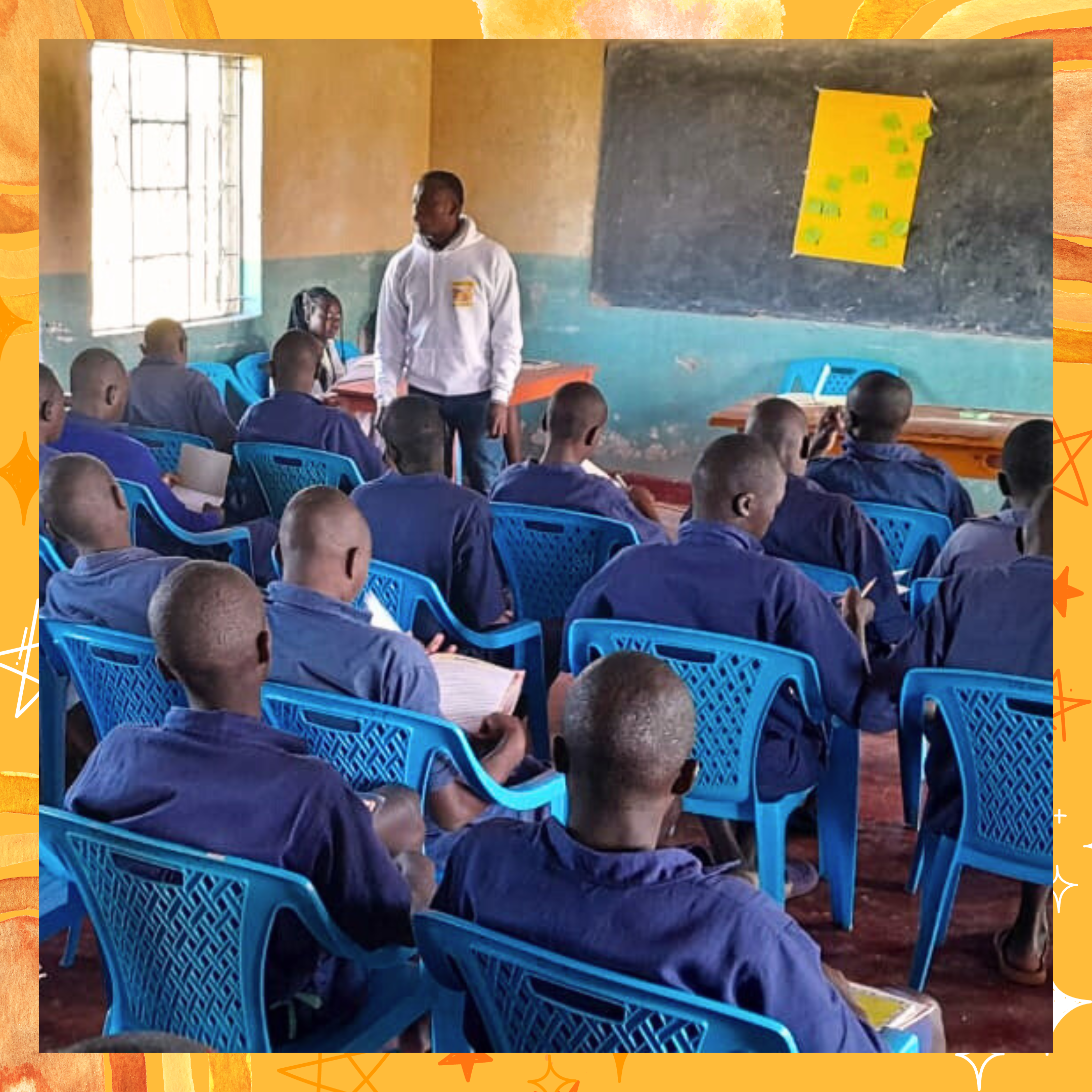In January 2023, after two years of planning, School for a Village hosted a design thinking bootcamp at Shikusa Borstal Institution. Shikusa Borstal Institution is an all-boys youth correctional facility located in Kakamega, Kenya. S4V developed a design thinking bootcamp to teach the students creative and iterative problem-solving approaches. By applying design thinking techniques, the students could strengthen their ability to understand user needs, generate innovative ideas, and develop practical solutions for important causes. The students completed challenges in teams while learning about ethnographic research, data analysis, app development, and computer literacy. By the end of the bootcamp, the students expressed excitement about using what they learned to address community needs. In post-program surveys, 90% of participants shared that our team and the program workbook explained the bootcamp concepts well. Many students felt confident that they could even teach other students what they learned in the bootcamp.
The bootcamp took place over four days, with each day focusing on a different skill. The first day, “Empathize,” challenged the students to understand their teammates and the needs of those impacted by a problem. One of the defining features of design thinking is collaboration. In most cases, innovations are not developed by a single person. To practice collaborating, the students worked in teams to build the tallest structure possible out of spaghetti, tape, and string. The teams were challenged to agree on a single design and work together to accomplish their goal. The students also practiced some ethnographic research techniques, like empathy mapping and the what-how-why approach. Ethnographic research aims to understand a problem and those most affected. Empathy maps are a tool to better understand the people a solution aims to benefit, and the what-how-why approach is used to make deeper observations. By practicing ethnographic research techniques, the students learned the importance of understanding an environment before attempting to improve it.
The second day of the bootcamp began enthusiastically as the students arrived notably early. This bootcamp section, “Define,” focused on several methods to identify issues and cause-and-effect relationships. By the end of “Define,” the students needed to make a problem statement. A problem statement provides a clear definition of a problem and its significance. To arrive at one, the students needed to gather observational data, analyze it, and connect it to known facts to draw conclusions. Throughout the day, the students learned and practiced several techniques to develop significant observations. For example, one method included the 5-Whys Technique, a means of exploring cause-and-effect relationships by asking “Why” five times. Asking “Why” five times encourages a deeper investigation into the underlying causes of a problem rather than just addressing the symptoms. The “Define” techniques challenged the students to develop a strong understanding of the problems they want to address. At the end of the “Define” section, the students received an introduction to MIT App Inventor, an online program designed by MIT to make app development more accessible. S4V chose to focus on app development to teach the students computer skills while they practiced real-world applications of design thinking principles. Because MIT App Inventor is a free web-based program, the students could continue exploring app development after the bootcamp concluded.
On the third day, the students were introduced to the concept “Ideate.” Ideation refers to the process of conceiving ideas. The “Ideate” stage required the students to conduct successful brainstorming sessions as a group. The group discussions centered around technology, entrepreneurship, and agriculture. The students applied principles to guide their brainstorming sessions, like deferring judgment and building on other ideas. The students also applied techniques, like mind mapping, which is a visual technique to represent an idea and related concepts. One of the most challenging parts of the day was likely idea selection. For any project, narrowing down ideas to try can be difficult when team members have differing ambitions and passions. In order to be impartial and thorough, the students analyzed their ideas to find the most achievable and desirable one. Then, the bootcamp instructors helped the students use MIT App Inventor. The students practiced app development, exploring different app features and layouts until it was time to conclude for the day.
The fourth and final bootcamp day was dedicated to “Prototyping.” Although there are several prototyping methods, the students focused on three methods: empathy, user-driven, and Wizard of Oz. Empathy prototyping prioritizes improvement by incorporating user feedback into the design process. User-driven prototyping loops users into the design process before developing a product, often through user research. Wizard of Oz prototyping simulates a product’s functions without fully developing the product, saving time and resources. To begin the “Prototyping” section, the students worked in teams to brainstorm ideas that would benefit society. As they brainstormed, they collected feedback from their peers. The students discussed lots of great ideas, including a jembe (‘hoe’ in Swahili) for people with disabilities. Then, they used MIT App Inventor to create real apps while continuing to implement feedback from their peers to refine their projects. The day concluded with a discussion to collect student feedback about the bootcamp.
The S4V team was very pleased with the bootcamp’s implementation. Many students said they wanted to spend more time with the design thinking teachers and found the bootcamp content interesting. A teacher at Shikusa Borstal Institution stated, “The students were so happy about the design thinking [program].” S4V loved working with the Shikusa Borstal students. It was rewarding to see another project come to fruition and to meet more students excited about technology. Thank you to our five S4V facilitators: Victor, Jefferson, Leah, Ann, and Janice. Thank you to the 52 bootcamp students at Shikusa Borstal Institution, and thank you to Elly Savatia, our MIT App Inventor expert!

